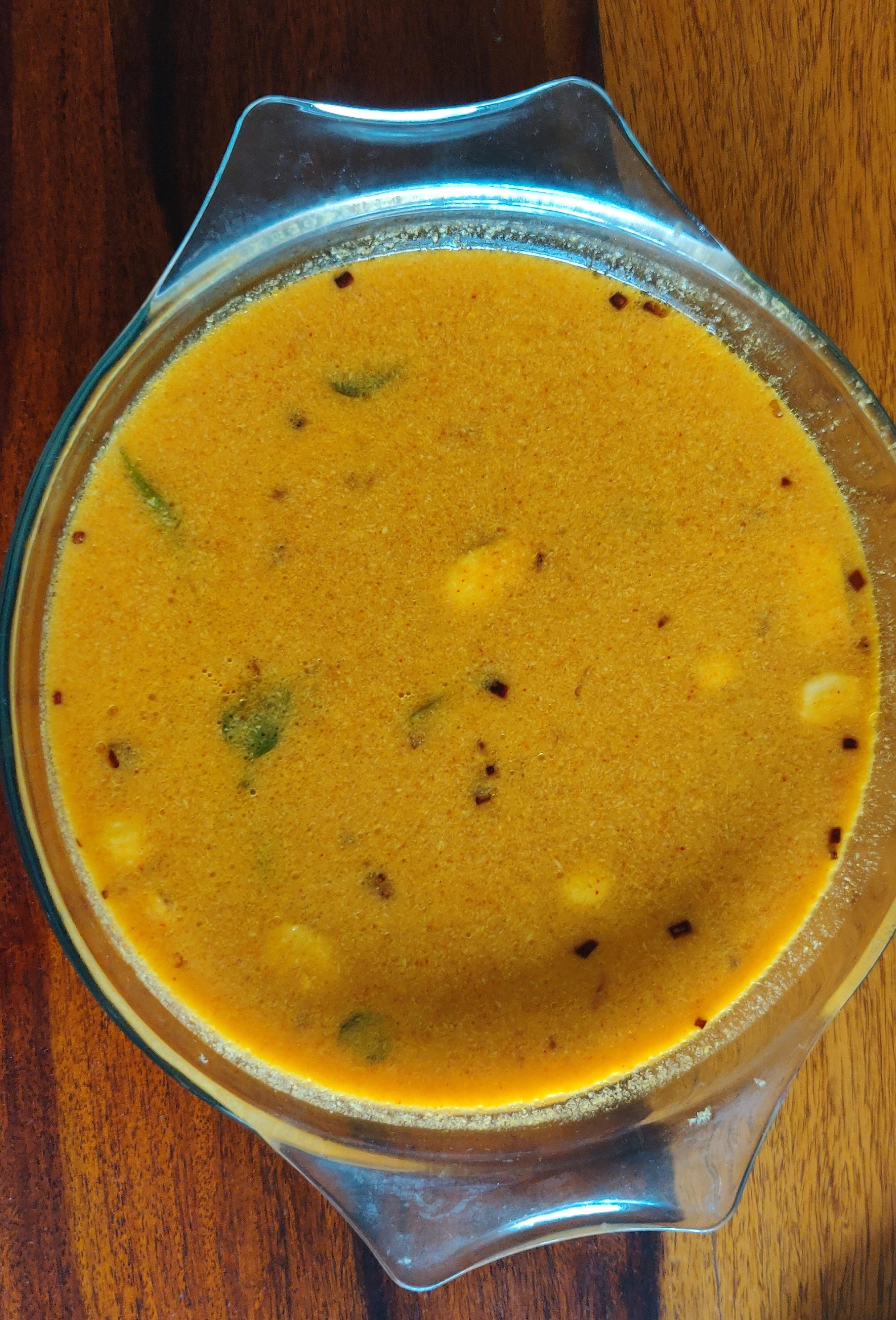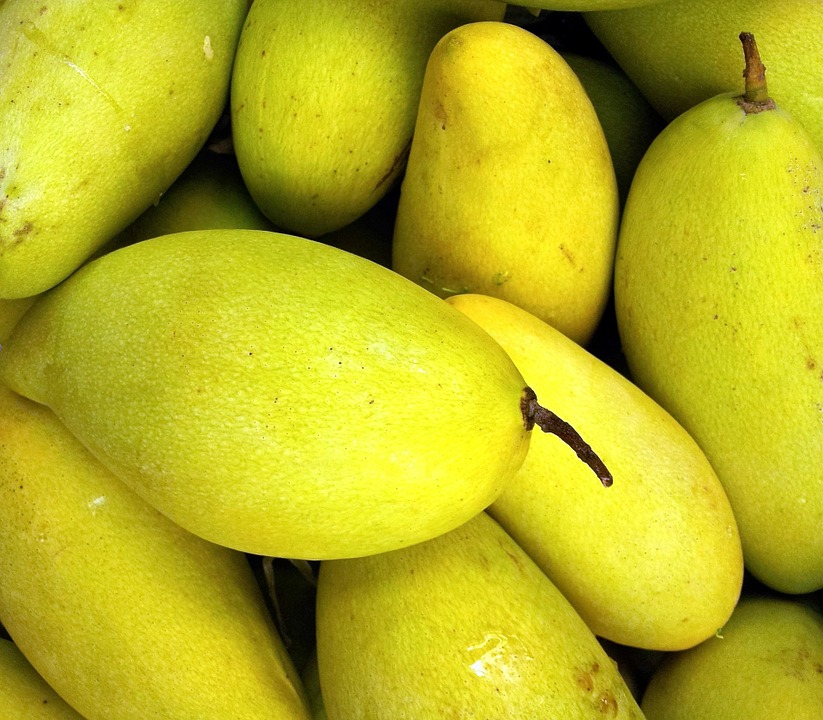
Mango Pulissery is best eaten with steamed rice and pappadam

Mango Pulissery is best eaten with steamed rice and pappadam

Mango Pulissery is best eaten with steamed rice and pappadam
In summer season when the mango trees around our house were laden with fruit, the women of the household would make the most of it, pampering the family with delicacies prepared with the fruit.
As a child I remember waking up early to accompany my aunt -- the formidable matriarch of the family -- on her daily ritual of walking through the farm. We would stroll through the orchards and there would be a veritable carpet of mangoes under the trees, some raw, some half eaten by squirrels and birds, and some luscious ripe golden ones that had somehow escaped the attention of the birds. Valiyamma would pick up a few mangoes, collecting them in the fold of her pristine white mundu and we would head to the little garden patch at the back of the house where my other aunt, Kanakamamma, grew vegetables ranging from string beans, spinach, amaranth, brinjal and multiple varieties of plump pumpkins, a staple in our kitchen. What the household ate on any day depended on what Valiyamma found in her daily morning walk in the farm. Having chosen the vegetable that she fancied, we would walk across to the store room, the keys of which she kept tucked into her waist, and pick out a couple of coconuts that would be ground by the women who helped Kanakamamma, who ruled the roost in her kitchen.
Each Kerala household has their own favourite mango dish, one that can be made repeatedly and still continue to be relished. Ours was and continues to be manga pulissery, a tart and sweet preparation with ripe mangoes, sour curd and ground coconut—the perfect accompaniment to rustic unpolished rice and golden pappadams.
The family also had another mango preparation that my mother, a great fan of sea food, prepared. Amma would wait every morning for the village fisherman to pass by the house and if he happened to have a fresh catch of prawns, her day was made. Otherwise not fond of entering the kitchen, the arrival of freshly caught prawns would galvanize amma into action and the kitchen would soon be a buzzing place with the women sitting around peeling the prawns, deveining them and grinding fresh coconut. And yes, one of the helpers would be despatched to the mango tree in the backyard to pluck a couple of sour raw mangoes for the curry.
These curries depend completely on local varieties of mangoes. Here, in Mumbai where I live, the market is full of desi mangoes from other parts of the country. Use them, if possible, over the alphonso, because the rustic flavour of the local mango is just right for these recipes. Do use home-made dahi (curd), if possible and keep it out overnight so that it is sour enough to balance out the sweetness of the ripe mangoes in the pulissery recipe.

Prawn and mango curry

Prawn and mango curry
Pulissery is a must on festive days such as Vishu, where it is a star dish on the sadhya served on plantain leaves. It is best eaten with steamed rice and pappadam.
Pulissery is a must on festive days such as Vishu, where it is a star dish on the sadhya served on plantain leaves. It is best eaten with steamed rice and pappadam.
Pulissery is a must on festive days such as Vishu, where it is a star dish on the sadhya served on plantain leaves. It is best eaten with steamed rice and pappadam.
Pulissery is a must on festive days such as Vishu, where it is a star dish on the sadhya served on plantain leaves. It is best eaten with steamed rice and pappadam.
The author is a 72-year-old passionate home-cook who believes wholesome, home-made food has the power to cure many an ailment of the body and mind. She grew up in a house surrounded by coconut trees and mango orchards in a tiny village in Kerala’s Malapuram district.












